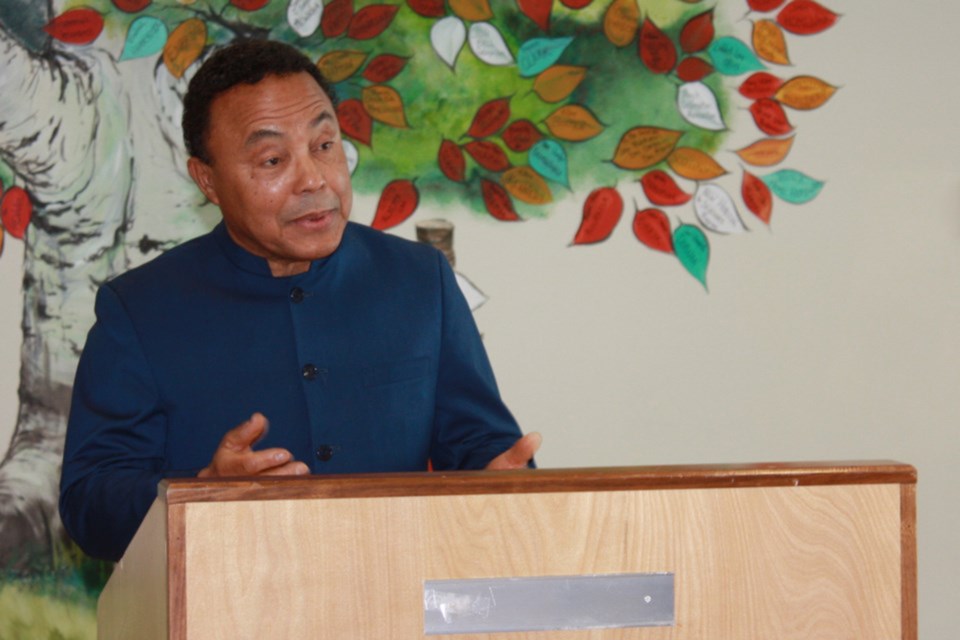ATHABASCA - The Athabasca region is blessed with an abundance of opportunities in the oil and gas, and agriculture and forestry sectors, but how to best utilize those opportunities and create others to stimulate economic development is something Luke Pantin has been working on since he started as interim tourism and economic development (TED) officer for Athabasca County earlier this year.
Pantin gave Athabasca County councillors an update on his work, via Zoom, at their June 25 meeting, pointing out 55 per cent of the northwest economic region’s Gross Domestic Product (GDP) comes as a result of the oil and gas industry, far above the provincial average of 35 per cent. Agriculture and Forestry also play a significant role at seven per cent of GDP, while the provincial average hovers at three per cent.
The northwest economic region is one of eight in the province and stretches from Athabasca west to the B.C. border and north to the territories. Neighbouring Lac La Biche County is part of the northeast economic region.
“As I am nearing the halfway mark of my term with Athabasca County, I think it is fitting to provide you with a snapshot of the general direction of which the region’s economic development is proceeding,” Pantin told council.
While oil and gas, and agriculture and forestry are definite strengths for the region, there are a number of challenges including broadband connectivity, infrastructure, market volatility, labour and trade restrictions, which makes for deficiencies in many other sectors, including construction, real estate, rentals and leasing, tourism, transportation and warehousing.
Any economic development in the region can help improve the economic situation of local residents and local businesses and enhance the community’s quality of life, said Pantin.
As such, Pantin wants to attract jobs from outside the area.
“It’s very hard for existing businesses to really increase the number of jobs because they have generally limited markets and are up to capacity, so we have to ensure we have new investment and new businesses opening so we can increase our jobs,” said Pantin.
It’s also difficult to attract new businesses without demonstrating a healthy business environment among existing businesses, so retaining and expanding the businesses that are already here is very important.
“We’ve worked hard to get local businesses going and our focus is outreach to the business community, communications and educating with as much research as we can to ensure local businesses can sustain and can become more and more robust,” he said.
Improving product readiness and competitiveness to strengthen local businesses is a major focus as well.
“Access to markets and increasing opportunities to finance are really important for the product readiness side of it, be it tourism, paper products or agri-foods, we need to be alert to what we’re competing against so we can strengthen our competitive position,” Pantin said.
He also hopes to spark a culture of innovation through entrepreneurship in the region and through the discovery and creation of new products. Great opportunities lay in the agri-food and processing industries, alternative crops, tourism, micro-breweries and home-based businesses.
Tourism, for instance, is an industry that could be further developed “through the development of new tourism products and by enhancing the overall Athabasca experience, visitors to the community will have more to do and see. As such, repeat business will increase, stays will be extended and overall interest in the community will rise resulting in new businesses and job creation.”
Using our strengths in agriculture, an enviable agri-foods industry could also be developed in the region.
“Because we are such an agricultural force in the province, the agri-foods sector is a great opportunity for us to explore. The Government of Alberta is aggressively trending toward value-added and processed foods on the export side, which enables companies in communities like ours, that are agriculturally strong, to capitalize on global food trends,” said Pantin.
The future success of the region will also depend on diversifying the economy as a whole.
“We will also try to provide the mechanism to work collectively with existing businesses to strengthen the economy and the entrepreneurial base,” said Pantin. “We’re also looking at attracting investment from the outside if we can, to create economic diversity. The only way we can get that economic diversity is with the right investors and attracting them to the right investments.”
Council commended Pantin for his work and for his presentation which councillors called “very well put together,” and “very insightful.”
“I think what you’ve got here Luke, is a gem, so let’s not hide it. Let’s take your gem and expand it out to the other areas we could coordinate with,” said reeve Larry Armfelt. “We’ve got terrific opportunities now to take this piece of art you’ve created and expand it so other people know about it. That should be our next step.”
Chris Zwick,TownandCountryToday.com



